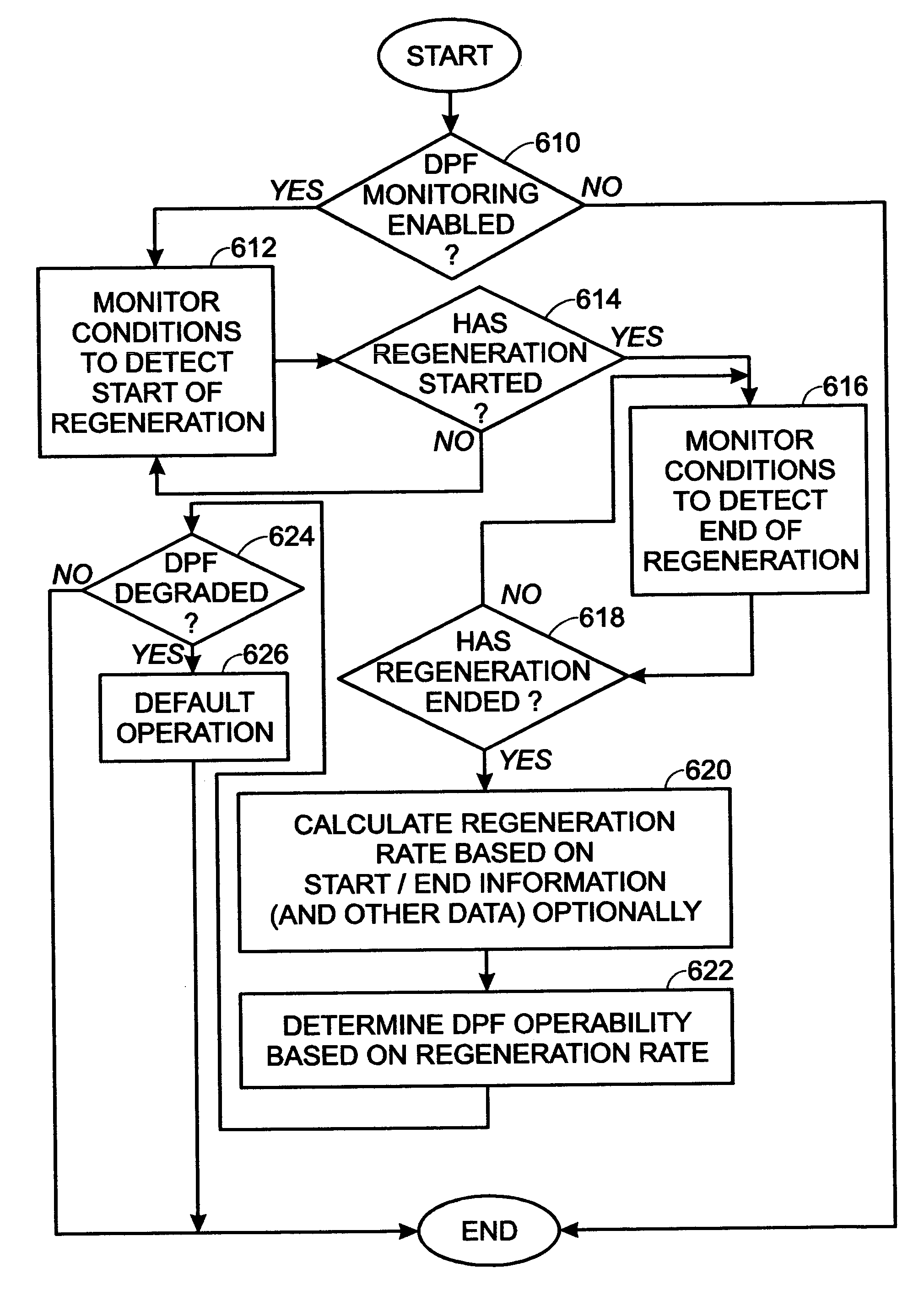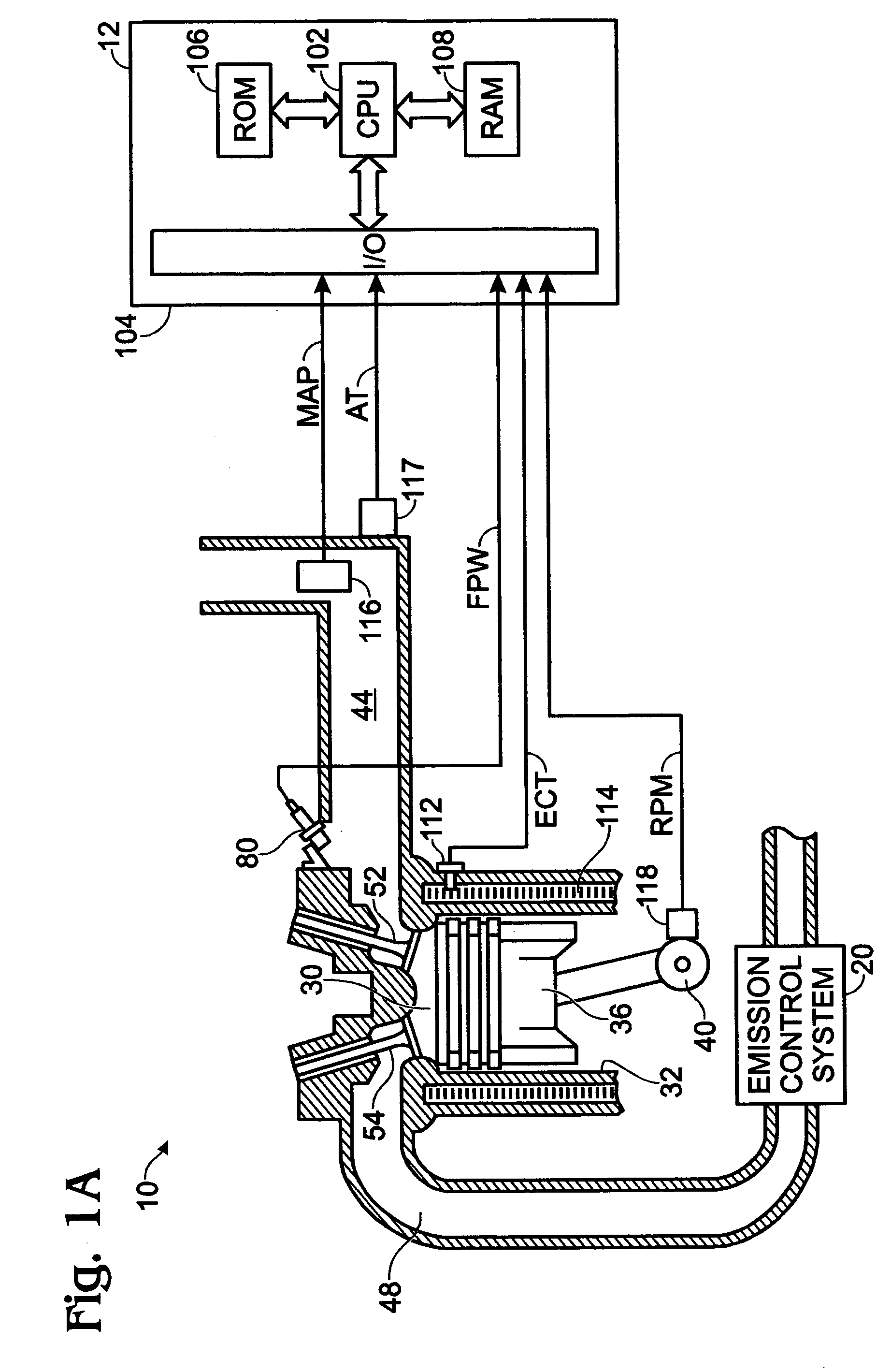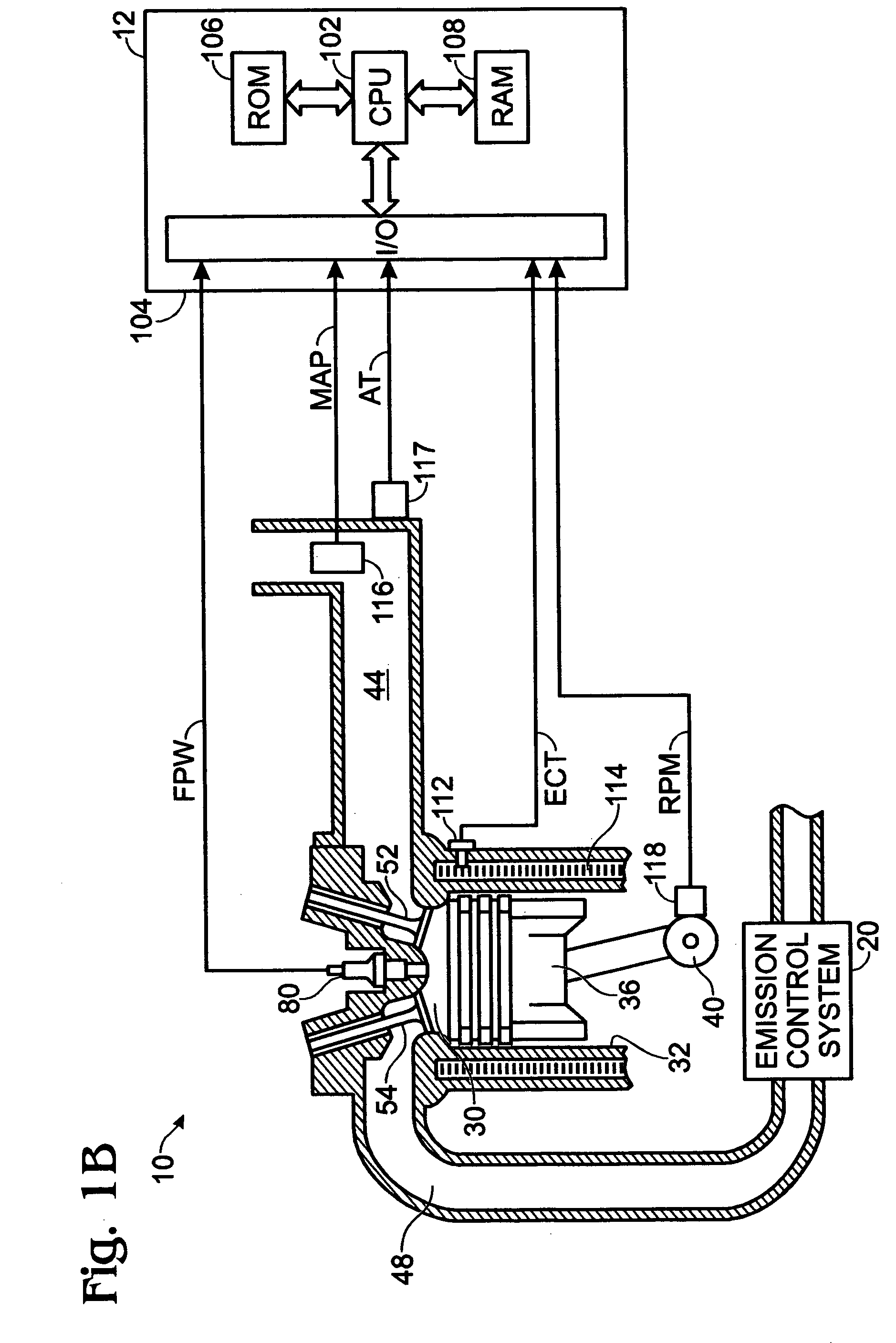Computer algorithm to estimate particulate filter regeneration rates
a technology of particulate filter and computer algorithm, which is applied in the direction of electrical control, separation process, instruments, etc., can solve the problems of lack of activity, degraded dpf catalytic materials, and failure to consider whether the released particulates have actually been burned, etc., and achieve the effect of accurate determination of dpf activity
- Summary
- Abstract
- Description
- Claims
- Application Information
AI Technical Summary
Problems solved by technology
Method used
Image
Examples
Embodiment Construction
[0004]The above disadvantages are overcome by a system comprising:
[0005]a computer storage medium having a computer program encoded therein for monitoring a particulate filter in a diesel engine exhaust, said computer storage medium comprising:[0006]code for determining a parameter indicative of a regeneration rate of said particulate filter; and[0007]code for determining degradation of said particulate filter based on said parameter.
[0008]By considering the regeneration rate of the DPF, that is the rate of soot reduction during DPF regeneration, or the time it takes to go from a certain restriction level to another lower restriction level, etc., it is possible to obtain a more accurate determination of DPF activity. For example, an indication of an unusually slow regeneration rate indicates lack of activity of the catalytic material on the filter, or a deficient temperature distribution. Lack of catalytic activity may be caused by a manufacturing error by the catalyst supplier, or ...
PUM
| Property | Measurement | Unit |
|---|---|---|
| temperature | aaaaa | aaaaa |
| time | aaaaa | aaaaa |
| exhaust gas temperature | aaaaa | aaaaa |
Abstract
Description
Claims
Application Information
 Login to View More
Login to View More - R&D
- Intellectual Property
- Life Sciences
- Materials
- Tech Scout
- Unparalleled Data Quality
- Higher Quality Content
- 60% Fewer Hallucinations
Browse by: Latest US Patents, China's latest patents, Technical Efficacy Thesaurus, Application Domain, Technology Topic, Popular Technical Reports.
© 2025 PatSnap. All rights reserved.Legal|Privacy policy|Modern Slavery Act Transparency Statement|Sitemap|About US| Contact US: help@patsnap.com



